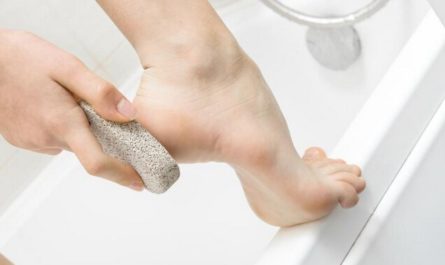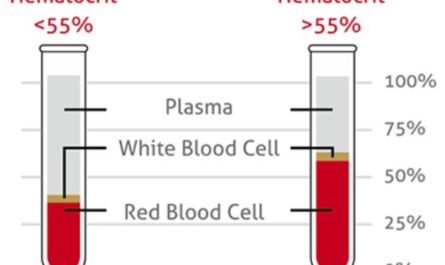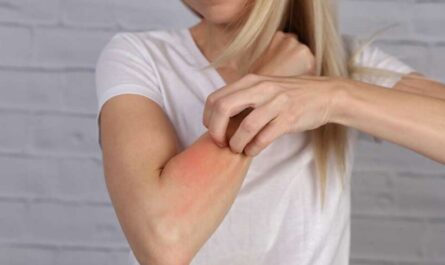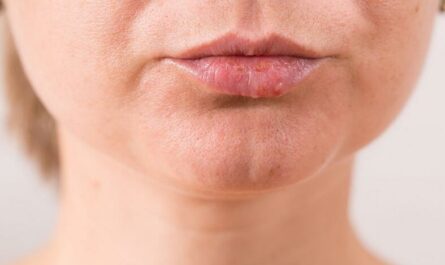Have you ever woken up with a painful bump on your forehead? It could be a cyst, a small fluid-filled sac that can form under your skin. While cysts are typically harmless, they can be unsightly and uncomfortable. If you’re looking for a natural way to get rid of a cyst on your forehead, you’re in luck. Several home remedies can help reduce the size and inflammation of a cyst, making it easier to manage. This article will discuss common causes of cysts on the forehead with natural treatment.

What are Cysts on the Forehead?
A cyst is an abnormal closed sac in the body, usually containing a gaseous, liquid, or semisolid substance. They can form in various parts of the body, including the forehead. They may be small, or they can grow quite large.
In the case of forehead cysts, they are usually made of keratin, a protein found in the skin and nails. These cysts can become inflamed and painful and may even ooze pus. If the cyst becomes too uncomfortable, it may need to be drained or surgically removed.
Symptoms of Cysts on Forehead
Cysts on the forehead are non-cancerous bumps filled with fluid and can range from very small to larger than a quarter.
Symptoms of cysts on the forehead can include swelling, tenderness, and redness of the area. In some cases, the cyst may be filled with pus or blood. The cyst may be painful to the touch and become more noticeable when applying pressure.
In some cases, the cyst may cause a headache due to the pressure it puts on the surrounding tissue. Other symptoms of cysts on the forehead include itching, flaking, and crusting of the skin surrounding the cyst.
Types of Cysts on Forehead
Here are some of the common types of cysts that may appear on the forehead area:
1. Sebaceous Cysts
These are small, painless lumps that typically appear on the face, neck, or upper back. They are also known as epidermoid cysts and usually contain a soft, yellowish substance.
Sebaceous cysts form when the sebaceous, or oil, glands become blocked. They often appear when a person has acne, which damages the oil gland and causes it to become blocked. Sebaceous cysts are not contagious and are typically harmless, but they can be unsightly and uncomfortable.
2. Milia Cysts
Milia cysts are tiny white bumps that form under the skin. They are most commonly found on the face, although they can also occur in other body areas.
Milia cysts are made up of keratin, a type of protein that is found in hair, nails, and skin. They often form when dead skin cells get trapped under the skin. Milia cysts are harmless and will usually go away on their own without treatment.
3. Pilar Cysts
Pilar cysts are also known as trichilemmal cysts. They are noncancerous lumps that can form on the scalp. They are caused by a blockage in the hair follicle, which causes the accumulation of keratin and oil. Pilar cysts can be painful and may become infected or irritated. They can be removed through surgery.
4. Dermal Cysts
Dermal cysts are small, round bumps that form under the skin. They are usually filled with a thick, white fluid that may be clear or yellowish.
A buildup of keratin, a protein in the skin, causes dermal cysts. They are usually found on the face, neck, upper back, and chest. Dermal cysts can become inflamed and can be painful. They may need to be removed with surgery.
10 Common Causes of Cysts on Forehead
1. Hormonal Imbalance
Hormonal fluctuations, especially during puberty, pregnancy, or menstruation, can trigger cysts on the forehead. Hormones like androgens can overstimulate the sebaceous glands, leading to an excess production of oil that clogs pores and gives rise to cysts.
2. Poor Skincare Routine
Neglecting proper skincare can pave the way for cyst development. Failure to cleanse the forehead regularly can allow dirt, oil, and dead skin cells to accumulate, leading to inflammation and cyst formation.
3. Excessive Oil Production
Some individuals naturally have overactive sebaceous glands that produce excessive oil. This can create an environment conducive to cyst formation due to clogged pores.
4. Hair Products
Certain hair products contain ingredients that may not be skin-friendly. These products can cause irritation and inflammation, resulting in cysts along the forehead.
5. Diet and Nutrition
A poor diet lacking essential nutrients can impact skin health and promote cyst formation. Consuming excessive dairy, sugary, or processed foods may exacerbate cystic acne.
6. Genetics
Family history plays a significant role in determining your skin’s predisposition to cysts. If your parents or siblings have a history of cystic acne, you may be more prone to developing cysts on your forehead.
7. Stress
Stress can trigger hormonal imbalances and increase inflammation, contributing to cyst formation. Finding ways to manage stress through relaxation techniques can be beneficial for preventing forehead cysts.
8. Environmental Factors
Exposure to environmental pollutants and toxins can irritate the skin, leading to cystic acne. It’s essential to protect your skin from harmful pollutants and UV rays.
9. Squeezing or Picking
Attempting to squeeze or pop cysts can worsen the condition and lead to infection. This can also cause scarring, making it crucial to resist the urge to pick at the cysts.
10. Certain Medications
Some medications may cause side effects that lead to cyst formation. If you suspect a particular medication is contributing to your cystic acne, consult your healthcare provider for an alternative.
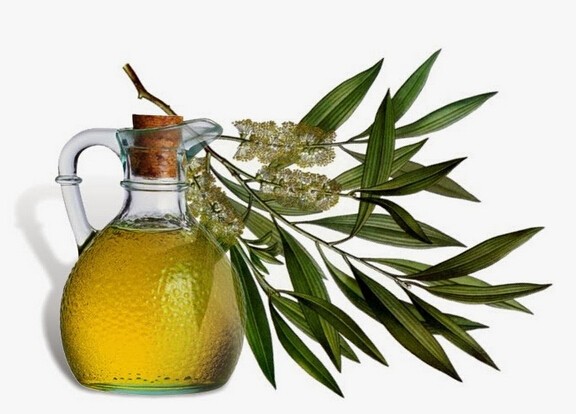
Home Remedies to Get Rid of Cyst on Forehead Fast
Tea Tree Oil
If you look at the ingredients of many skin care products, you will see that tea tree oil is one of the most common ingredients.
This is effective because it has anti-inflammatory and antibacterial properties. You can expect that you can get rid of other skin problems effectively, aside from your cyst.
- You need to mix tea tree oil with a carrier oil like olive oil so that it can be absorbed by the skin better.
- Apply directly to the cyst and wait for a few minutes.
- You may need to apply this thrice a day until you see the cyst start to subside.
Apple Cider Vinegar
Whenever people are asked what one of the items that are always part of the home remedies list is, ACV will always be one of the items that will be mentioned. People use ACV to improve their metabolism and get rid of excess salt in the body, but this time, ACV can also get rid of cysts.
- Apply the ACV directly to the cyst.
- Cover with a band-aid to make the ACV easier to absorb by the skin.
- You must keep the bandage on the cyst for about 3 – 4 days.
- On the last day of the bandage, remove it, and see a hard crust.
- When you pull the hard crust, the pus from the cyst will come out.
- Make sure that you drain the cyst properly so that it will not spread any more.
Hot Compress
This may be the most straightforward home remedy you can do to get rid of the cyst on your forehead. This is known to be useful for different health issues, and the sebaceous cyst is no different from all others. Through the hot compress, the pus can be quickly drained and removed.
- Ensure that the hot compress is not too hot when you apply it to your forehead; otherwise, you risk burning yourself.
- Apply for a few minutes.
- Drainage of the cyst may happen naturally afterward.
Castor Oil
Many people know castor oil can be very effective in removing acne. They have used castor oil for a long time, and there is no reason you should not use castor oil now. Castor oil can make the cyst shrink.
- You need to prepare a clean cloth first and dip it in warm water.
- Place the warm cloth over the cyst before applying castor oil.
- Allow the warm cloth and the castor oil to remain on the cyst for about 20 minutes.
- When you remove the cloth, you should notice that the cyst has gotten smaller.
- Remember that you should not drink castor oil just to use this as a home remedy.
Ice Packs
If the cyst on your forehead was caused by getting hit by a blunt object or by any form of trauma, then you should apply ice immediately to make the inflammation subside. The more inflamed your cyst is, the harder it will be for you to tone it down.
- If you have an ice pack, simply fill it with ice before applying it to the cyst for about half an hour.
- If you do not have an ice pack, use a clean cloth instead.
- Take 5-minute breaks from time to time so that your skin will not be too dry even after doing this home remedy.
Turmeric
Many people are slowly getting to know the many benefits of turmeric. People are trying to get more of it by drinking more turmeric tea or applying turmeric powder on some of their skin issues and problems.
You can expect that this will be helpful for you too. It can remove the impurities that may be contributing to the cyst.
- Add half a teaspoon of turmeric to warm milk.
- Mix well together.
- Take this every day, and you may be surprised by the results.
Epsom Salt
Some people think Epsom salt is only effective for digestion, but it can do more things. This can help eliminate the infection that may prevent your cyst from healing completely.
Epsom salt can help fight the bacteria that have caused the cyst to form in the first place.
- Place Epsom salt in the water you will use to clean your face.
- You may use warm water first, then switch to cold when you finish.
- You may do this every day until the cysts diminish in size.
Honey
There are different things that honey can do. When you use honey, you need to ensure that you will be using raw and organic honey as this type of honey comes with the most ingredients that will be very effective in curing your cyst.
- You can add honey to wheatgrass ground to make a paste.
- Apply on the cyst and cover it with a bandage overnight.
- You will be pleasantly surprised when you see how small your cyst will be in the morning.
How to Prevent Cysts on Forehead in the Future?
1. Wear sunscreen: Sun exposure is a major cause of developing cysts on the forehead. Wear broad-spectrum sunscreen with an SPF of 30 or higher every day. Reapply it every two hours, especially during extended sun exposure.
2. Avoid picking: Do not pick or squeeze pimples or cysts, as this can cause them to become infected and lead to further complications.
3. Cleanse daily: Wash your face twice daily with a gentle cleanser to remove dirt, oil, and bacteria. Use your fingertips to massage the cleanser into your skin in a circular motion.
4. Use a mild exfoliant: Exfoliating your skin can help to prevent clogged pores and reduce the risk of developing cysts on the forehead. Look for gentle exfoliants containing salicylic acid or alpha-hydroxy acids.
5. Apply a topical retinoid: Retinoids can help reduce the appearance of cysts on the forehead by increasing cell turnover and reducing the risk of clogged pores. Look for topical retinoid creams or gels that are labeled as non-comedogenic.
6. Seek medical treatment: If a cyst on your forehead causes pain or discomfort, seek treatment from a qualified medical professional. In some cases, cysts may need to be drained or removed.
When to see your doctor about Cysts on the Forehead?
It is important to make an appointment with your doctor if the cyst is growing in size, is painful, or is accompanied by other symptoms.
Your doctor may recommend a biopsy to determine if the cyst is cancerous. If it is, surgery may be necessary to remove it. Additionally, if the cyst is infected, antibiotics may be prescribed.
If the cyst is accompanied by fever, redness, or drainage, or the cyst is filled with pus; you should see your doctor immediately.


